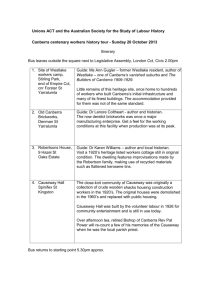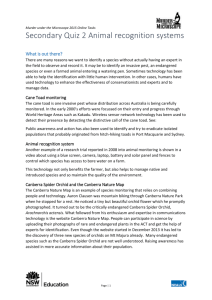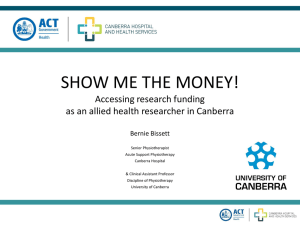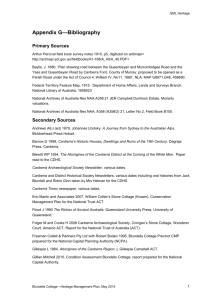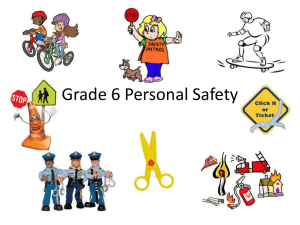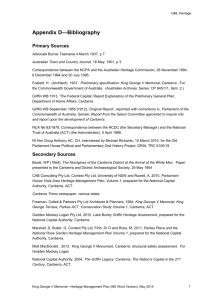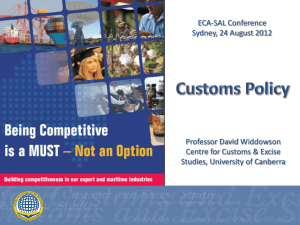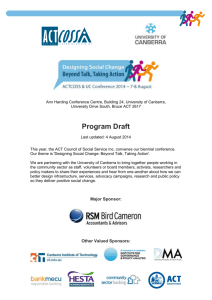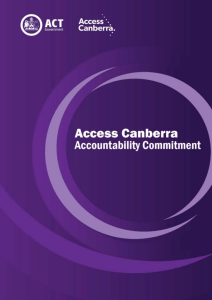ACT Transport Planning
advertisement
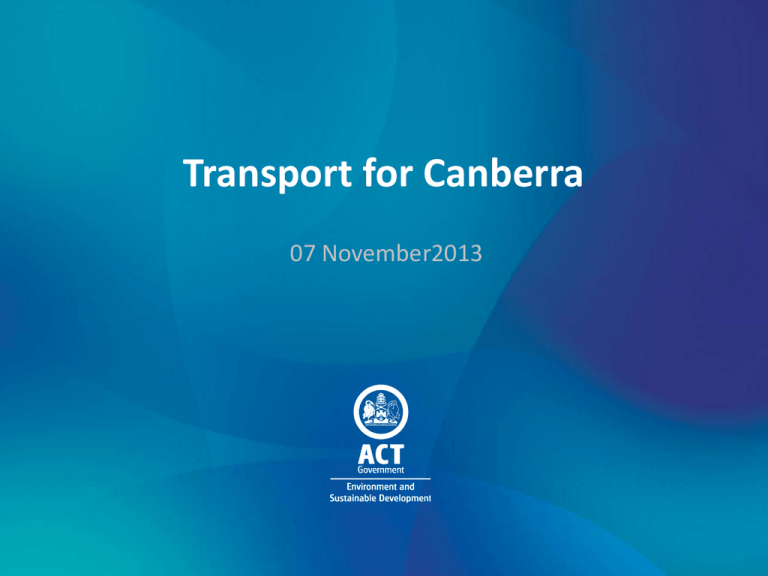
Transport for Canberra 07 November2013 Transport for NSW: Regional Transport Plan • ACT, whilst not part of the region, is an important destination • Transport needs to be planned and managed in an integrated fashion • Buses, coaches, taxis, community transport, active transport and the road network all have a part to play. • Recognise the growing freight tasks ACT strategies • Integrated and multi-modal transport system • Progress better transport connections to the region • Freight Survey • Prepare Freight Strategy • Opportunities to expand transport modelling Transport for Canberra 1. 2. 3. 4. 5. 6. 7. 8. 9. Drivers of Transport Demand Canberra – Queanbeyan growth Transport Issues Transport for Canberra goals Public transport Active travel Managing parking Managing travel demand Key Arterial Roads and Projects Drivers of Transport Demand Land-use Projections 5 Growth of Canberra – Queanbeyan and Congestion Canberra-Queanbeyan Growth Number of Persons 600000 500000 400000 Population 300000 Employment 200000 Enrolments 100000 0 2011 2031 Transport Issues • Growing congestion • Rising transport emissions • An ageing population • Declining physical activity • The need to balance transport investments Transport for Canberra goals • The draft Transport for Canberra policy aims to create a transport system that is: – Integrated with land use planning – Makes active travel (walking and cycling) the easy way to get around – Provides sustainable travel options and reduces transport emissions – Is safe for moving people – Is accessible for everybody – Is efficient and cost effective Public Transport: The Frequent Network • Rapid lines are the “backbone” of the network, and the location for future mass transit like bus or light rail transit. • Frequent Local lines provide high frequency service but more slowly, with closer spaced stopped connecting areas of current or future higher density. • Frequent Network is about transport and land use integration. • Supportive infrastructure – Park and ride, bike and ride, bus priority, light rail/BRT options study for Northbourne Avenue. • Coverage network for social inclusion and feeder services The eastern corridor could run from Canberra City to Queanbeyan via Canberra Avenue. ACT is investing on public transport infrastructure – Canberra Avenue and possible park and ride Improvement of this corridor increases the viability of public transport. Active travel • Active travel means using physical activity— such as walking, cycling and scooting—to get around. • Economic and health benefits of physical activity. • Accessibility/connectivity to bus stops, local shops, schools, neighbours. Active travel policy Policy Programs/in action Strategically plan to extend the network of community paths, segregated cycleways, shared spaces and paths and on-road cycle lanes and improve signage and safety Strategic Cycle Network Plan Walkability project Encourage more people to live, work and play within their local community so that more activities can be done by active travel Planning Strategy implementation Work with the community to promote active travel, particularly in schools and workplaces, through promotion, programs and infrastructure Active travel to school Travelsmart workplaces Health promotion Create better walking and cycling connections to bus stops, Bike and Ride facilities, and local destinations like group and local centres. Walkability project Strategic Cycle Network Plan Capital upgrades/expansion Parking policy • Park and ride to provide convenient options close to home on Rapid corridors (e.g. Canberra Avenue) • Prioritise short stay in town centres to encourage high turnover and support businesses • Supply (public and private sector) to help manage changing demand • Pricing to encourage sustainable travel choices • Improve parking provision for motorbikes and for People with Disabilities Managing travel demand • Investment on peripheral arterials to distribute traffic and heavy vehicles • Freight strategy development • Priority for public transport on Rapid spines supported by orbital road options for trucks and cars. • Managing travel demand helps create a more efficient system based on moving people rather than vehicles. Key Arterial Road Investments Construction • Majura Parkway • Parkes Way upgrade Design • Barton Highway/ Gundaroo Drive Feasibility Study • Canberra Avenue • Pialligo Avenue Sustainable Transport Projects • Capital Metro (Light Rail) project • Belconnen to City transitway • Canberra Avenue transitway • Network of Park and Ride and Bike and Ride • Bus stations Gungahlin, Erindale and Barton • City interchange and layover • Bus shelters and major stops • Real Time Passenger Information System There is one thing that we should do to solve our transport problems is to stop thinking that there will be one thing will solve…
